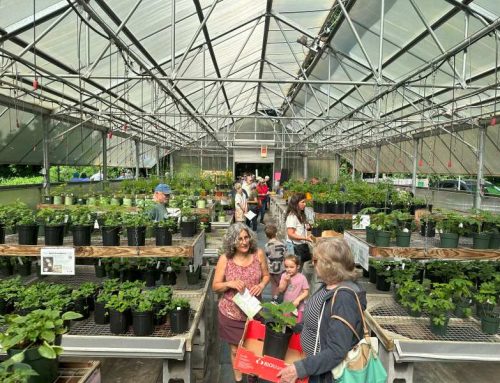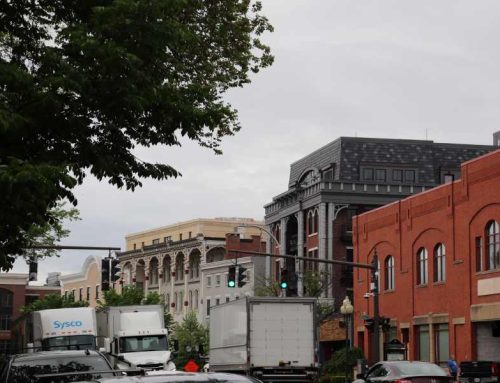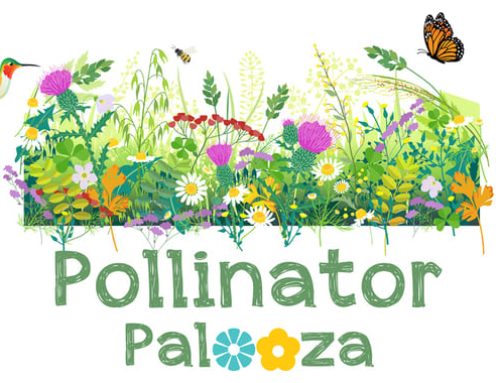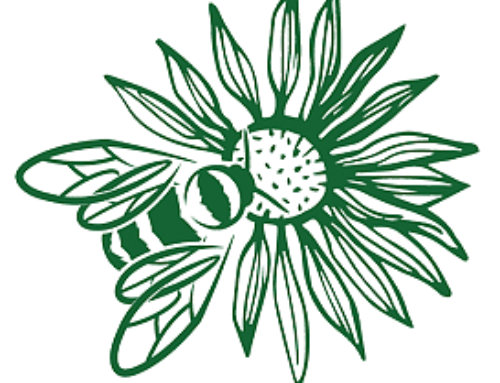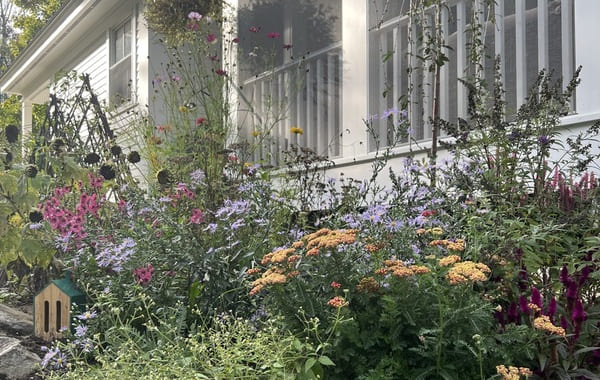
Blossoming Where We’re Planted
How Gardening Builds Community, Nurturing Ourselves and the Environment
Guest post by Bethany Bowyer Khan
This post is a call to action to garden for gardeners and non-gardeners alike, but is also a call to connect with ourselves and our local community. I hope reading this provides an opportunity to step back and consider how supporting our local ecosystem through planting, particularly native perennials, fosters a better sense of self, connects us with not just the bee buddies in our gardens, but also builds lasting relationships with one another.
The title of this post is a bit of a play on words with the well-known saying “grow where you are planted”. In one sense, it occurred to me that these words apply themselves literally to the concept of supporting the growth of native species that have been self-sowing for thousands of years on the grounds that we call home today. In another sense, growing where one is planted can refer to growing as a community, and also growing as an individual within that community. I have always felt frustrated with this quote in that I questioned whether where I was “planted” was in fact the right place for me to grow.
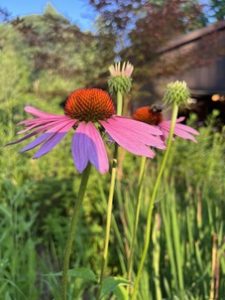
Echinacea purpurea
My husband and I were lucky to begin calling Saratoga Springs our home two years ago when we moved up from Brooklyn, New York. Knowing few people in the area, and having an 18 month-old daughter, I felt a calling to connect with my community more intentionally than I had ever contemplated. Connecting with others was important to not only my personal well-being, but for building connections with my whole family. And looking back two years, it’s incredible that so many of the most rewarding relationships that we’ve made have unintentionally been through connecting with the earth and our gardens.
Gardeners each have our own reasons for growing. In many cases as I have found, those reasons are often personal and more significant than we usually slow down to contemplate. In this way, I encourage friends to get their hands in the dirt because I’ve always found it so therapeutic and fulfilling. Regardless of why we initially make our way into working the soil, once we’re there I’ve found that often leads to only positive outcomes. And by sharing my interests and experiences with others, I’ve learned that what I have received in return has been quite a gift.
Since moving here, we have had friends reach out with extra plants that they’ve offered to transfer to our gardens. We’ve offered up our own rhubarb annually through my Instagram account to give away to anyone interested – and have met new neighbors as a result! Our neighbors down the road have offered their peaches and vegetables from their kitchen gardens. We’ve even pureed this local food that nourished my son when he began eating solids last summer. We have had friends offer their lilacs and hydrangeas to create locally-sourced floral designs in our home. I have even had a cold call message from someone on Instagram who offered dahlia tubers, shared her tips on planting when I picked them up, and then offered gorgeous cuts of her peonies while I was there. I’ve been to networking events where we’ve foraged for clippings from someone’s gardens and created bouquets from her hard work while talking business. This generosity sticks with me. And I feel like I’ve tapped into something worth nurturing. It’s about the plants and the ecosystems, yes, but it’s also about the people.
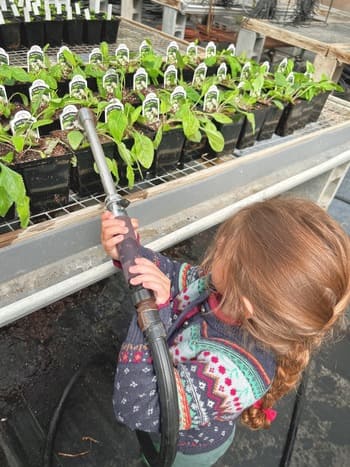 I’ve enjoyed leveraging these connections, and sharing what I have and what I know with others. About a month ago I brought my daughter, who is now three years old, with me to help prepare for Sustainable Saratoga’s wildly successful annual native plant sale. It was her first official day of volunteering, and she certainly held her own by watering the plants, and playing with a golden retriever she met while I did my best to contribute. There was a moment for me that day while the group of women there were quietly planting and buzzing through work stations each carrying on various conversations that I realized how good it felt to just be present. It didn’t matter what we were planting or discussing, but just being there – acknowledging that organic community – was a tremendous gift. And it helped make this place feel like home.
I’ve enjoyed leveraging these connections, and sharing what I have and what I know with others. About a month ago I brought my daughter, who is now three years old, with me to help prepare for Sustainable Saratoga’s wildly successful annual native plant sale. It was her first official day of volunteering, and she certainly held her own by watering the plants, and playing with a golden retriever she met while I did my best to contribute. There was a moment for me that day while the group of women there were quietly planting and buzzing through work stations each carrying on various conversations that I realized how good it felt to just be present. It didn’t matter what we were planting or discussing, but just being there – acknowledging that organic community – was a tremendous gift. And it helped make this place feel like home.
Since moving here, I’ve partnered with the National Wildlife Federation’s Garden for Wildlife program (an incredible resource) through my Instagram account, Arcadian Revival, and have encouraged folks to plant native species. The feedback from non-gardeners and gardeners who have not thought much about native plants has been tremendous. I love an opportunity to use my platform to have a positive impact. But outside of the digital world, as an individual, it is these connections that remain the most rewarding.
I hope that those reading these words who do not garden, consider giving it a try. I can attest from first-hand experience that the quiet time in our garden is one where I have some of my best ideas surface, a place where I’ve turned to in times of joy and sorrow. And so when I connect with fellow gardeners, other artists if you will, I like to imagine the unspoken ways that we’re connecting with one another by just being together and sharing a tip or two.
The kindness, generosity, sharing of knowledge, and sharing of plants themselves has been one of the most meaningful and authentic ways that we’ve felt welcomed to this community. And I aspire to give back and to share with others all that I feel lucky to have discovered myself.
And if you are a gardener, I hope you’ve been able to tap into the amazing folks in the area who have a shared passion for gardening. And I wonder, have you imagined new ways of sharing your experience growing with others? Of connecting through events or of opening dialogs that lead to new conversations and ideas? I feel that making these connections is not only self-nurturing, but is necessary for strengthening our gardening community and thus our ecosystems in return.
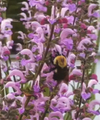 If Bethany’s post has inspired you to start your own garden, we have a great primer on starting a native pollinator garden from scratch
If Bethany’s post has inspired you to start your own garden, we have a great primer on starting a native pollinator garden from scratch
See our Pollinator pages for more information, plant recommendations, and resources

